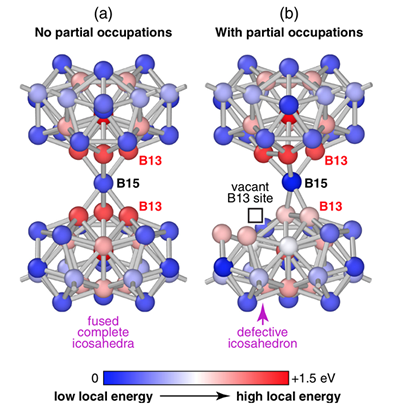First principles structure searches, where initially random atomic configurations are repeatedly relaxed to low energy arrangements according to quantum mechanical forces, have lead to the discovery of many fascinating structures and phenomena (from the formation of xenon oxides under pressure, to high temperature superconductors). However, the determination of the quantum mechanical forces is computationally challenging, even using efficient density functional theory (DFT) based codes such as CASTEP. The search for complex structures becomes extremely costly - in terms of time, money and energy.
It is sometimes possible to construct simple interatomic potentials that describe the interaction between atoms, and provide a rapid way to explore the energy landscape. These potentials are based on the idea that atoms in similar environments will contribute similarly to the total energy. The building of empirical (or data driven) potentials can be very difficult to perfect. There is great interest in using data fitting techniques that form the bedrock of modern machine learning (ML) - such as deep neural networks or gaussian processes, to automate and improve this process.
In this paper researchers from the University of Cambridge Engineering and Materials Science and Metallurgy Departments have combined Random Structure Searches (RSS) with Gaussian Approximation Potentials (GAPs) to study boron. They obtain the first general purpose empirical boron potential, and open up the possibility of resolving the many long standing puzzles surrounding elemental boron - such as the microscopic structure of beta-boron.
Figure: In contrast to quantum mechanical approaches, interatomic potentials allow the total energy to be broken down into atom by atom contributions. An analysis of the RSS-GAP model for beta-boron shows that partially occupying the B13 site greatly reduces the local energy of the remaining ones.
Volker L. Deringer, Chris J. Pickard and Gábor Csányi, "Data-Driven Learning of Total and Local Energies in Elemental Boron", Physical Review Letters, 120, 156001 (2018) [Editors Suggestion]

